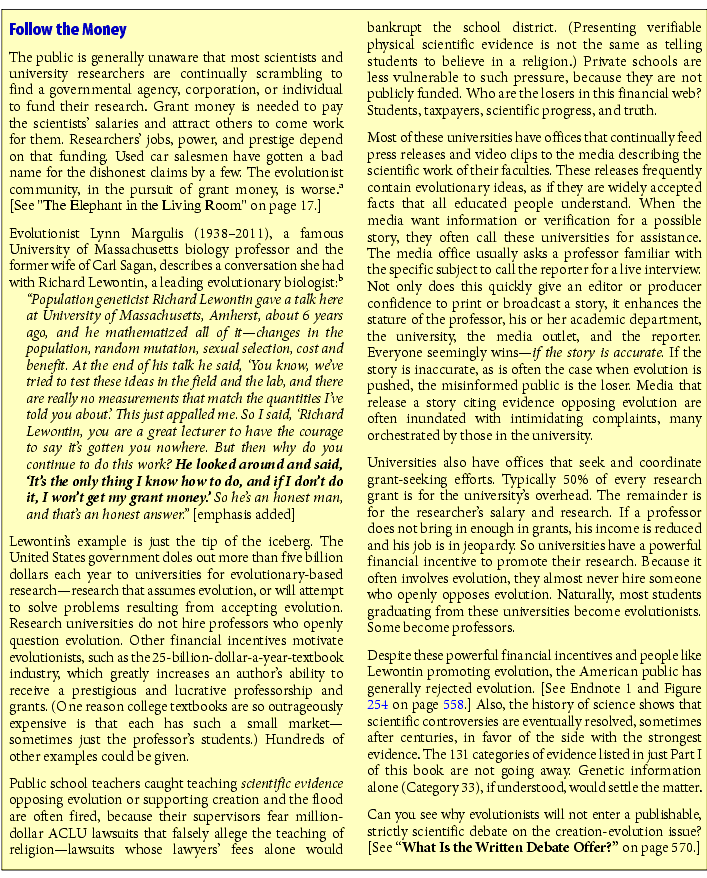32. Genetic Distances
Similarities between different forms of life can now be measured.
Proteins. “Genetic distances” can be calculated by taking a specific protein and examining the sequence of its components. The fewer changes needed to convert a protein of one organism into the corresponding protein of another organism, supposedly the closer their relationship. These studies seriously contradict the theory of evolution.a
An early computer-based study of cytochrome c, a protein used in energy production, compared 47 different forms of life. This study found many contradictions with evolution based on this one protein. For example, according to evolution, the rattlesnake should have been most closely related to other reptiles. Instead, of these 47 forms (all that were sequenced at that time), the one most similar to the rattlesnake was man.b Since this study, experts have discovered hundreds of similar contradictions.c

DNA and RNA. Comparisons can also be made between the genetic material of different organisms. The list of organisms that have had all their genes sequenced and entered in databases, such as “GenBank,” is doubling each year. Computer comparisons of each gene with all other genes in the database show too many unrelated genes.d Therefore, an evolutionary relationship between genes is highly unlikely. Furthermore, there is no trace at the molecular level for the traditional evolutionary series:e simple sea life fish amphibians reptiles mammals. Each organism appears to be almost equally isolated.f
Humans vs. Chimpanzees. Evolutionists say the chimpanzee is the closest living relative to humans. For two decades (1984–2004), evolutionists and the media claimed that human DNA is about 99% similar to chimpanzee DNA. These false statements had little scientific justification, because they were made before anyone had completed the sequencing of human DNA and long before the sequencing of chimpanzee DNA had begun.
Chimpanzee and human DNA have now been completely sequenced and compared. The overall differences, which are far greater and more complicated than evolutionists suspected,g include about “thirty-five million single-nucleotide changes, five million insertions or deletions, and various chromosomal rearrangements.”h Although only 4% of human and chimpanzee DNA differ, those critical differences amount to a vast chasm.
Moreover, differences between the male portion of the human and chimpanzee sex chromosome are huge! Only 30% of the DNA sequences in the male portion of the human sex chromosome overlap with those in the chimpanzee sex chromosome. Even overlaps contain massive genetic rearrangements.i The genetic differences are comparable to those between nonsex chromosomes in chickens and humans.j Also, humans shuffle male and female DNA to their offspring in different ways than chimpanzees do.k
In summary, the standard evolutionary trees, based on the outward appearance of organisms, differ considerably from comparisons based on genetic information.l